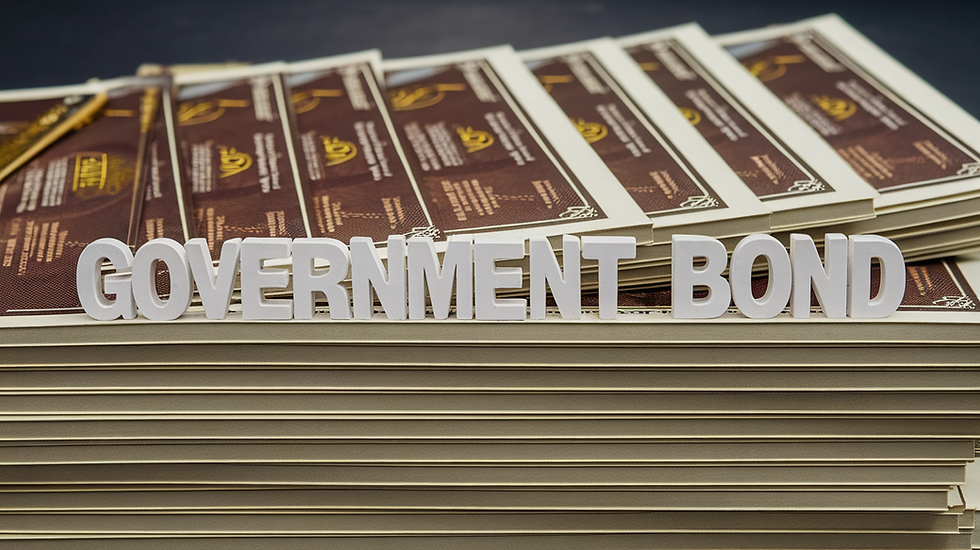Unsystematic Risk: A Complete Guide
- Laura Bennett

- Sep 1
- 4 min read
When you invest, every decision carries some level of risk. Some risks affect the entire market, while others are tied to specific companies or industries. Unsystematic risk falls into the second category. It is the type of risk that comes from internal factors within a business or sector.
Unlike systematic risk (which impacts the whole economy), unsystematic risk can be reduced—or even eliminated—through diversification. Knowing how unsystematic risk works helps you build a safer portfolio and make smarter investment choices.

What is Unsystematic Risk?
Unsystematic risk, also called specific risk, diversifiable risk, or idiosyncratic risk, is the uncertainty that affects only a particular company or industry. It arises from internal business operations, management decisions, or industry trends.
Examples include:
A company’s poor financial performance.
A product recall or failure.
A labor strike within one company.
Sudden changes in a specific industry, like new regulations in tech or healthcare.
Since these risks are not tied to the entire market, investors can reduce them by spreading investments across multiple sectors and companies.
Sources of Unsystematic Risk
Unsystematic risk can come from various company- or industry-specific factors:
Business Risk – Poor sales, failed marketing strategies, or weak leadership.
Financial Risk – High debt levels or poor cash flow management.
Operational Risk – Production breakdowns, supply chain disruptions, or accidents.
Legal/Regulatory Risk – Lawsuits, fines, or sudden industry rules.
Event Risk – Strikes, fraud, or scandals in a company.
Each of these risks impacts only the company or sector involved, not the entire economy.
Unsystematic vs Systematic Risk
It’s important to distinguish unsystematic risk from systematic risk:
Systematic Risk – Market-wide risk that affects all investments (inflation, interest rate hikes, recessions). It cannot be eliminated through diversification.
Unsystematic Risk – Company- or industry-specific risk that can be reduced by holding a diversified portfolio.
For example, if you only invest in one airline and it faces strikes, your portfolio suffers. But if you own stocks in different industries, the impact is much smaller.
How to Reduce Unsystematic Risk
The good news is that unsystematic risk is controllable through smart investing. Here’s how:
Diversification – Spread investments across multiple companies and sectors.
Research – Study a company’s financial health, leadership, and business strategy.
Regular Monitoring – Stay updated on industry news and company reports.
Balanced Portfolio – Mix stocks, bonds, and other assets to avoid heavy exposure to one risk.
This is why mutual funds and index funds are popular—they instantly diversify your investments.
Benefits of Understanding Unsystematic Risk
Knowing about unsystematic risk helps investors:
Make Safer Decisions – Avoid overexposure to a single company.
Build Resilient Portfolios – Balance investments across industries.
Manage Risk vs Reward – Understand which risks can be minimized and which cannot.
Protect Long-Term Goals – Reduce sudden shocks from company-specific issues.
Simply put, understanding this risk makes you a smarter investor.
Limitations of Unsystematic Risk
Even with diversification, some challenges remain:
Not Fully Predictable – Company events like fraud or sudden lawsuits are hard to foresee.
Requires Monitoring – Investors must track companies regularly.
May Still Impact Returns – Even diversified portfolios can feel some effects.
Still, compared to systematic risk, unsystematic risk is easier to manage and reduce.
Real-Life Example
Imagine you invest all your money in a single tech startup. If that startup fails due to poor management, you lose heavily. This is unsystematic risk. But if you also own shares in healthcare, energy, and consumer goods companies, losses from one stock can be balanced by gains in others—showing how diversification reduces the impact.
Conclusion
Unsystematic risk refers to the uncertainties tied to a specific company or sector. Unlike market-wide risks, it can be reduced through diversification, research, and portfolio balancing.
By spreading your investments across industries and asset classes, you shield yourself from sudden shocks caused by company failures, scandals, or operational problems.
While you cannot eliminate all risks, you can manage unsystematic risk effectively and protect your financial goals.
FAQs
What is unsystematic risk in simple words?
Unsystematic risk is the chance of losing money because of problems in a specific company or industry, like poor management, strikes, or lawsuits. It does not affect the whole market. The good part is that you can reduce this risk by diversifying your investments across many companies and sectors.
What are examples of unsystematic risk?
Examples include a company’s product recall, a strike at a factory, a fraud scandal, sudden new regulations affecting one industry, or financial troubles like high debt. These risks only affect specific companies or industries, not the entire economy, making them avoidable through diversification and careful research before investing.
How is unsystematic risk different from systematic risk?
Systematic risk affects the entire market and cannot be avoided (like recessions, inflation, or interest rate hikes). Unsystematic risk, on the other hand, only impacts specific companies or industries. You can reduce unsystematic risk by diversifying your portfolio, but systematic risk must be managed by asset allocation and long-term planning.
Can unsystematic risk be eliminated completely?
Yes, in theory, unsystematic risk can be nearly eliminated through diversification. By spreading investments across many industries and companies, the impact of one company’s failure becomes small. However, total elimination is rare because even diversified portfolios may still feel minor effects from company-specific events.
Why is understanding unsystematic risk important for investors?
It’s important because it teaches investors how to protect themselves from avoidable losses. By knowing that unsystematic risk can be managed, investors can focus on building diversified portfolios. This reduces sudden shocks, balances risk and reward, and makes investing safer over the long term, especially for beginners and cautious investors.


Comments